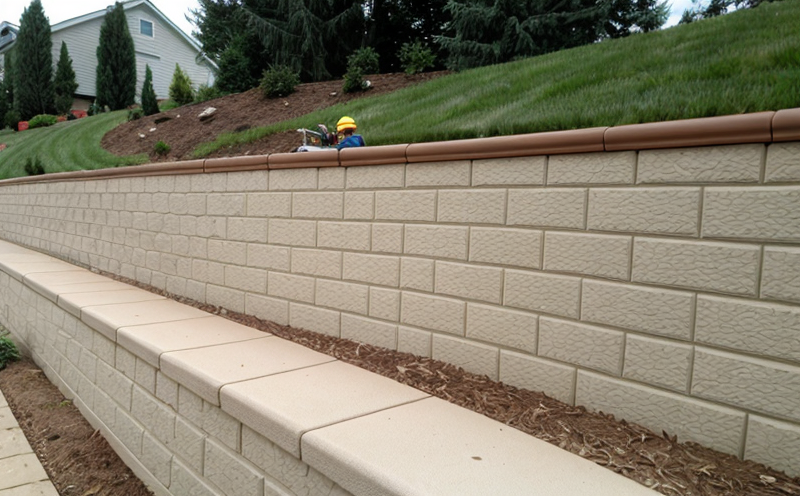Retaining wall inspection
In construction and building projects, retaining walls play a critical role in maintaining soil stability and ensuring structural integrity. These structures are designed to hold back earth or rock from one level to another, preventing erosion and landslides. The quality of these structures is paramount, especially given the significant forces they must withstand over time. Retaining wall inspection involves a series of tests aimed at evaluating various aspects of the wall's design, materials, construction, and performance.
During an inspection, several factors are considered to ensure that the retaining walls meet specified standards and perform as intended:
- Foundation Integrity: Ensuring that the base of the wall is stable and properly supported by a suitable foundation.
- Material Quality: Checking the quality of concrete, aggregates, and other materials used in construction for durability and strength.
- Geotechnical Analysis: Evaluating the soil conditions and ensuring that the wall design accounts for local geological factors.
- Load Distribution: Assessing how loads are distributed across different components of the wall to prevent failure or uneven settlement.
The inspection process often involves a combination of visual assessments, destructive and non-destructive testing methods, and advanced instrumentation. This comprehensive approach ensures that any potential issues can be identified early in the project lifecycle. By focusing on these aspects, retaining wall inspections help to prevent costly repairs or structural collapses down the line.
| Standard | Description |
|---|---|
| ASTM D4230-19 | Standard Test Method for Unconfined Compressive Strength of Cohesive Soil. |
| EN 1998-2:2004 | Design of retaining structures and other earthworks. |
The standards referenced above provide a framework for conducting inspections that ensure compliance with industry best practices. By adhering to these guidelines, constructors can maintain high-quality workmanship and minimize risks associated with poorly designed or constructed retaining walls.
Why It Matters
The integrity of retaining walls is crucial for the safety and longevity of buildings. These structures are often subjected to significant pressures from soil, water, and other environmental factors, making them prone to failure if not properly designed and constructed. A well-executed inspection can identify potential weaknesses early on, allowing for timely corrections before they become critical issues.
The consequences of a failing retaining wall can be severe, leading to property damage, increased maintenance costs, and even personal injury or loss of life in extreme cases. Regular inspections not only help maintain the structural integrity but also contribute to overall site safety by ensuring that all components function correctly together.
Applied Standards
| Standard | Description |
|---|---|
| ASTM D4230-19 | Standard Test Method for Unconfined Compressive Strength of Cohesive Soil. |
| EN 1998-2:2004 | Design of retaining structures and other earthworks. |
The application of these standards ensures that the inspection process is standardized, reliable, and consistent with industry best practices. Compliance with these guidelines helps to maintain high-quality workmanship and minimize risks associated with poorly designed or constructed retaining walls.
Why Choose This Test
- Comprehensive Evaluation: Offers a thorough assessment covering all critical aspects of the wall's design, materials, and construction.
- Early Identification of Issues: Helps detect potential problems before they escalate into major issues that could compromise structural integrity.
- Regulatory Compliance: Ensures adherence to relevant codes and standards, reducing the risk of legal challenges or penalties.





